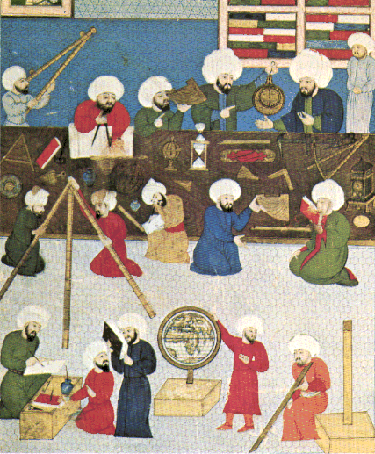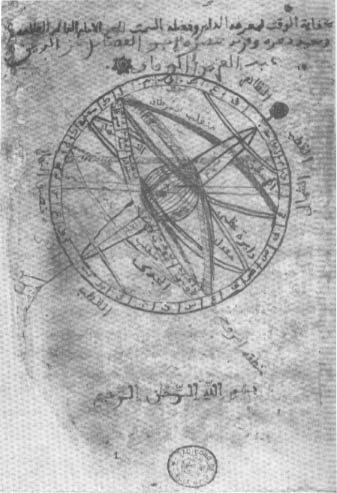

P.200
 |
Discussion on the different styles of Copernicus and Euclid.
What did you observe about the styles of Copernicus and Euclid? How are their arguments constructed?
Note that there is a paragraph of "setting up" the problem, identifying what's to be computed, compared, etc. Auxiliary lines, labels and so forth are added into the figure. Then, there is think D a formal argument that the claimed relationship holds, framed in terms of theorems of Euclidean geometry.
Break into groups and identify these parts of the argument from Des Revolution, Chapter 6, and Euclid, prop 44.
Problem: Given the sum of the roots and the sum of their cubes, to derive the roots.
Zetetics: Let B be the sum of the roots and D the sum of the cubes. The roots are to be derived.
Poristics: Four times the sum of the cubes minus the cube of the sum of the roots divided by three times the sum of the roots yields the square of the difference between the roots. Given the sum and difference between the roots, the roots are determined.
in modern language:
(((4D - B3) / 3B)1/2 + B)2/2
and
(((4D - B3) / 3B)1/2 - B)2/2
check this answer. What is lost in this formalism?
During the early middle ages,the Arabic world produced capable mathematicians, who translated Greece mathematics into Arabic. The first copies of Euclid were translated into Latin from Arabic. For a thousand years, the Islamic world had access to these documents and were studying and building upon them, especially in the area of computing roots of difficult equations, al-jabr (to restore). When europeans got their hands on the ancient greek texts, they were in Arabic. Along with them came mathematical works of a new sort by Arabic mathematicians, including an algebra text by Al-Kwarizmi (one of several spellings). This contained material known to Diophantus, new work on solutions of certain cubics and so on. It was translated into latin by late medieval Christian scholars who were also concerned with solutions to particular equations. These were called "cossists" by others, because they wanted to restore the value of the thing (cosa)rto be found. But they never translated the last part of Al-Kwarizmi's book into Latin, probably because they couldn't figure out what it meant, and in part because it just wasn't Greek. Lluyl (?) Catalan monk with the Institute for learning arabic. The Dark Ages weren't dark in the Arab speaking world, nor in Africa.
Plate 6.4, P.178
 |
Plate 6.1, P.160
 |